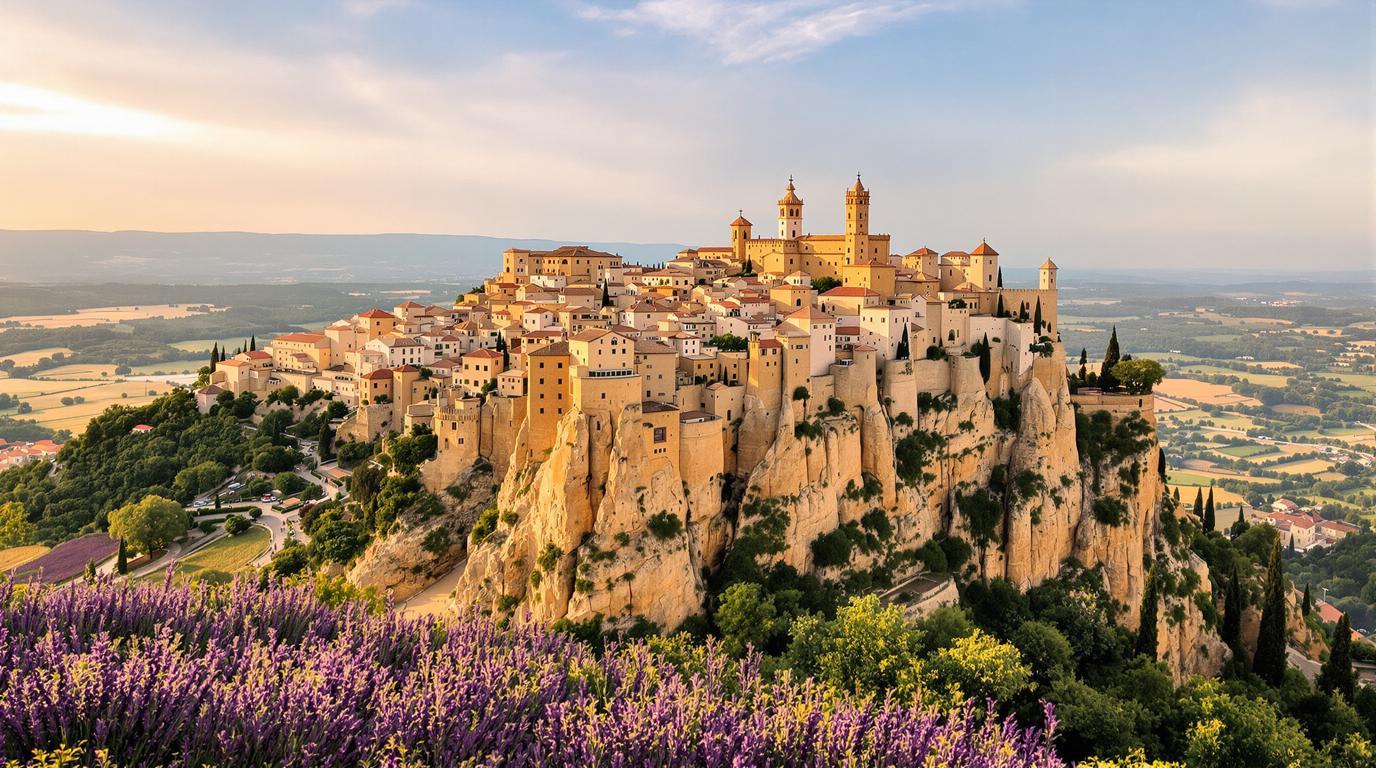Gordes, France: The Stone Jewel That’s Stealing Hearts From the World’s Most Popular Destinations
Perched dramatically on a limestone cliff in Provence’s Luberon Valley, Gordes has quietly become one of France’s most photographed villages without succumbing to mass tourism. This stone-built marvel, officially recognized as one of “Les Plus Beaux Villages de France” (The Most Beautiful Villages of France), offers an authentic glimpse into Provençal life that rivals its more famous coastal counterparts.
A village where every stone tells a story
Walking Gordes’ narrow cobblestone streets feels like stepping into a living museum. The village’s distinctive architecture—weathered limestone buildings with terracotta roofs—dates back centuries, creating a harmonious tapestry against the azure Provençal sky. Medieval history comes alive at the 11th-century Château de Gordes, which now hosts art exhibitions for approximately €7 per visitor.
“The light here is unlike anywhere else in the world,” says local artist Marie Laurent. “The way it plays on the stone walls throughout the day creates a painter’s paradise that has attracted artists for generations.”
Underground secrets beneath your feet
Few visitors discover one of Gordes’ most fascinating attractions: Les Caves du Palais Saint-Firmin. This network of underground cellars and rooms, once used to store olive oil and grain, offers a glimpse into medieval village life. For just €6, you can explore these remarkably preserved subterranean spaces that date back to the Middle Ages.
The lavender connection that photographers chase
Just 4 kilometers from Gordes stands the iconic Abbaye Notre-Dame de Sénanque, a 12th-century Cistercian monastery surrounded by vibrant lavender fields. Visit between late June and early August to witness the purple blooms that have become synonymous with Provence. Arrive at sunrise for the most magical experience—when morning mist drifts across the fields and the first light illuminates the abbey’s stone walls.
Ancient stone huts from another era
The nearby Village des Bories showcases a collection of dry-stone huts dating back centuries. These dome-shaped structures, built entirely without mortar, represent a remarkable feat of engineering and offer insight into rural life before modern amenities. Their simplicity evokes a connection to similar structures found in places like Alaska’s unusual communal living arrangements—proof that humans create innovative dwellings in challenging environments worldwide.
Market day: A sensory explosion
Tuesday mornings transform Gordes into a bustling marketplace where locals and visitors mingle among stalls selling regional specialties. Sample truffle-infused olive oil, lavender honey, and pungent goat cheeses while chatting with producers. The market offers a vivid contrast to the quiet stone surroundings, much like Pennsylvania’s tiny towns that burst into activity during special events.
Dinner with a view to remember
La Bastide de Gordes hotel’s restaurant offers perhaps the most spectacular dining vista in Provence. From its terrace, diners gaze across the Luberon Valley while savoring refined Provençal cuisine. As the setting sun bathes the landscape in golden light, it’s easy to understand why wealthy investors sometimes purchase entire historic properties, not unlike Mark Cuban’s ghost town acquisition.
When to visit: The shoulder season secret
While summer brings spectacular lavender, May and September offer perfect temperatures, fewer crowds, and lower prices. The village takes on a golden glow in autumn when the surrounding vineyards turn amber and russet. Winter brings a peaceful tranquility that locals cherish.
“Gordes in winter reveals its true soul,” explains Jean-Pierre Fournier, a resident of 40 years. “When the tourists leave, the village returns to its ancient rhythm. The stone absorbs the quiet, and you can almost hear centuries of history whispering in the alleys.”
The hidden religious heritage
The 18th-century Église Saint-Firmin contains unexpected artistic treasures and regularly hosts classical music concerts with exceptional acoustics. This unassuming church offers a spiritual experience reminiscent of repurposed sacred spaces in America, though maintaining its original function.
Beyond Gordes: Daytrip possibilities
Nearby villages like Roussillon (known for ochre-colored buildings) and Ménerbes (made famous by Peter Mayle’s “A Year in Provence”) make perfect half-day excursions. The entire region resembles Europe’s hidden fortress towns with secrets locals rarely share.
Gordes doesn’t just offer postcard-perfect vistas—it provides a sensory journey through Provence’s soul. Here, centuries-old traditions continue uninterrupted, the scent of lavender drifts on warm breezes, and time seems to slow to the pace of another era. In a world of manufactured experiences, Gordes remains defiantly, gloriously authentic.
